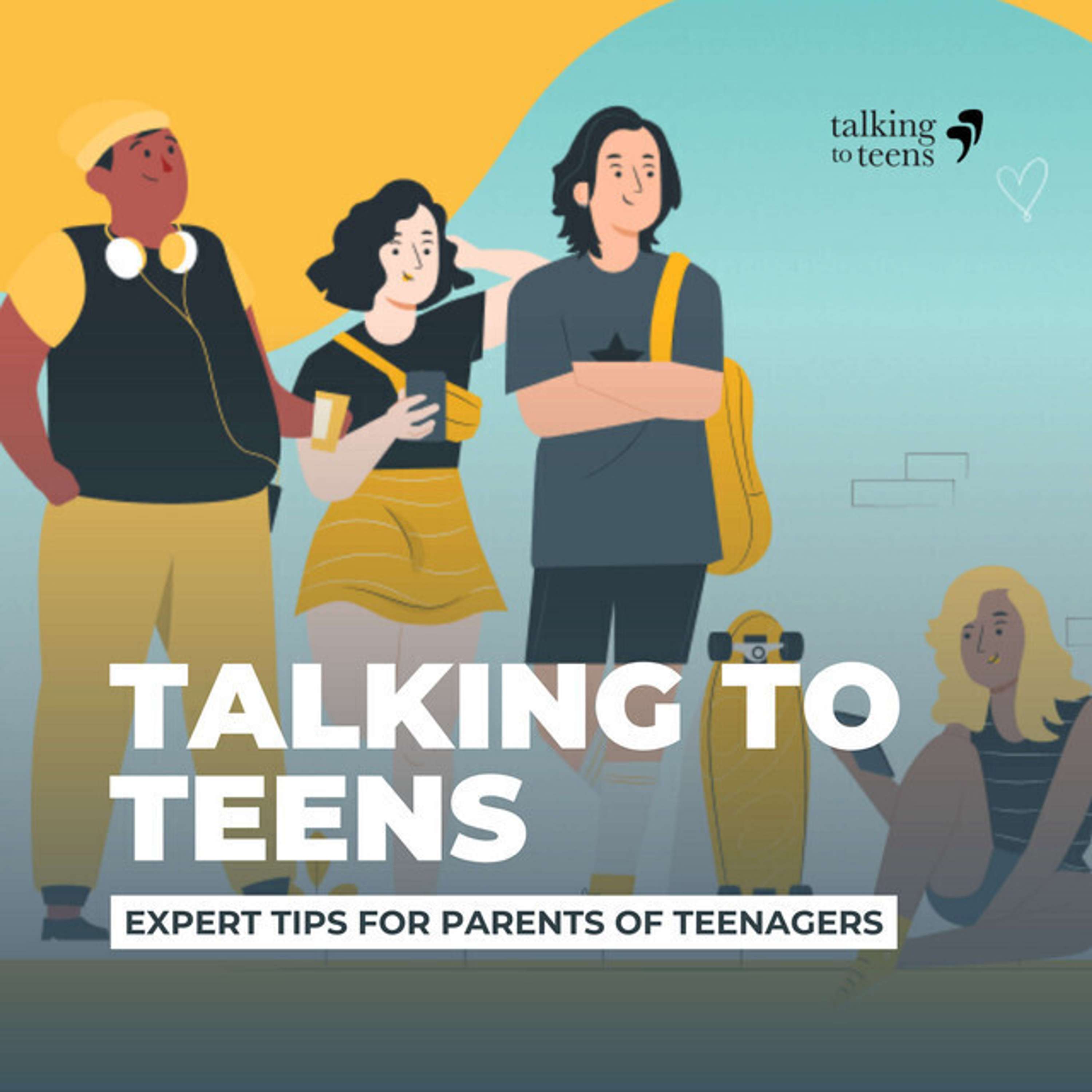Ep 165: Secrets to a Better Connection
David Bradford, PhD, co-author of Connect, shares his insights for how to create a deeper, more meaningful connection with your teen by tweaking communication.If you've enjoyed Talking to Teens, we'd love if you could leave us a five-star rating, and if you have time, a review! Full show notesWe often hear that the secret to a healthy relationship of any kind is communication...but what does that really mean? Does it mean apologizing when we feel we’ve messed up, or daring to discuss uncomfortable topics? Are there certain things we shouldn’t say, and how do we know when we’re communicating too much? How do we get teens who are checked out to actually hear what we’re saying? These questions and more are keeping us from having an open, communicative relationship with our teens.But when bad communication causes so many problems, it’s understandable that you might be hesitant. When you’re feeling frustrated or upset with your teen, certain ways of communicating can deepen the divide between the two of you instead of building a bridge. Teens who are dealing with pressures from every side of life can sometimes drive us up the wall–and despite our best efforts, we too often let our communication fall into a pattern of yelling, nagging and not really listening to what they have to say. This week, we’re helping you fight the tendency to slip into all the fussing and fighting. By giving you the guidance to create a healthier, more communicative relationship with your teen, our hope is to bring some harmony to your home. Our guest is David Bradford, professor at Stanford’s graduate school of business and author of Connect: Building Exceptional Relationships with Family, Friends, and Colleagues. David’s been teaching a seminar at Stanford on interpersonal dynamics for two decades, and he’s here to share some of the most valuable insights from his work with us.David and I are discussing why teens often refuse to hear anything we have to say, and how we can open up a stronger, more positive channel of communication between us and them. We’re providing alternatives to giving advice, which, according to David, in’ts as effective as we think! Plus, we’re discussing what David calls the “three realities of communication” to uncover why our misunderstandings can so often lead to hurt feelings or accusations.When Teens Won’t ListenTeens love to breeze through the front door and right into their rooms, giving you little more than an “mhhm” or a “yeah sure.” And although you might want your teen to have autonomy, there are still things you need to talk to them about! As a parent, there’s so much wisdom you can provide to protect and guide your teen–and there are likely rules that need to be followed under your roof! So how can we get through to a teen that doesn’t even seem to hear a word you say?Say you’ve noticed your teen vaping once or twice, and you want to have a talk with them….but they keep slamming the door in your face. David explains how hard it is for teens to open up about these kinds of sensitive subjects, especially when they feel cornered. The issue lies in the power dynamic between parents and teens. In many situations outside the family, those in lower status positions almost always experience difficulty being vulnerable with their superiors, says David. Although you aren’t “superior” to your teen, you are older and likely control their finances, living situation and transportation! This makes the power dynamic a bit uneven. To help level the playing field, David emphasizes the importance of not responding to conflict with a show of authority. If you can make it clear to your teen that you want to talk about the vape without declaring punishment or dictating rules with an iron fist, you’re more likely to have a productive conversation that they’ll actually sit through!In our discussion on how to engage teens, David and I talk extensively in the episode about why you should stray away from giving avoidant teens advice–and ask open ended questions instead. The Pitfalls of Giving AdviceAs parents, it’s our natural urge to meet every one of our teen’s obstacles with some sage wisdom from our wonder years. If we can offer anything as a parent, it’s some meaningful advice about picking a college or surviving a breakup...right? David actually argues otherwise. In his eyes, giving advice is just another way parent’s tend to push their own beliefs, views and opinions onto kids, telling them what to do instead of prompting them to think critically and find their own solution.Instead, David suggests asking open-ended questions. Let’s take our vape example. Now that we’ve decided not to be authoritative, say we choose to give advice. We tell them that we tried cigarettes back in our teen years, but we stopped because we didn’t want to get addicted or have serious health issues–and they should do the same. Not a bad piece of communication, but it totally neglects the fact that kids are living in a different era where even their cigarettes are electronic! Plus, it doesn’t provoke any discussion or thought on their end. Let's say instead we ask open-ended questions, as David recommends. Questions like, what motivated you to start vaping? How does the experience make you feel? What are some other ways of getting the same sort of feeling that might be healthier? What comes to mind when you think about throwing the vape away? Now notice, these aren’t answered with just a “yes” or a “no”. They encourage kids to really process and think critically about why they’re engaging in a particular destructive behavior, and how they might discover a better way forward.Now, no matter what you say to teens, there will always be some difference in your intention and their interpretation. David and I are tackling that discrepancy with an idea he calls the “three realities of communication.”Why Communication Has ComplicationsSo you decide to ask your teen some open-ended questions about the vape, questions you identify as non threatening. But they suddenly blow up, claiming all you do is try to control them and restrict their freedom. You can’t see the way they arrived at this conclusion, and try to dispute them, until the whole thing turns into a full blown argument. Now the two of you aren’t talking, and the vape situation hasn’t been discussed at all!David breaks down this process into the different communication “realities.” The first is the intent behind the message, or your attempt to simply learn some more information about the vape. The second is the communication itself–objective details like where it happened, when it happened, and the question that was asked. The third is how the message was interpreted by the recipient–not well, in this scenario! Even though sometimes we get lucky enough to have all three fall in line, they’re never exactly the same. This can often lead to confusion, mixed signals and even hurt feelings.To try and navigate this nuanced world of communication, David suggests a commonly used tactic you may have heard of before: using “I” statements, especially “I feel” statements. In doing this, you are making an effort to describe your subjective experience and avoid telling anyone else what their experience is–because how could you possibly know? In our interview, David elaborates on this further and shares tons of other tips for making communication more cohesive.In the Episode…The topics mentioned above are just the tip of the a...
# Communication StrategiesTechniques and methods discussed by Dr. David Bradford for effectively communicating with teenagers.











